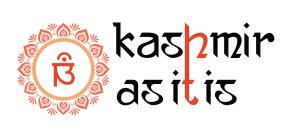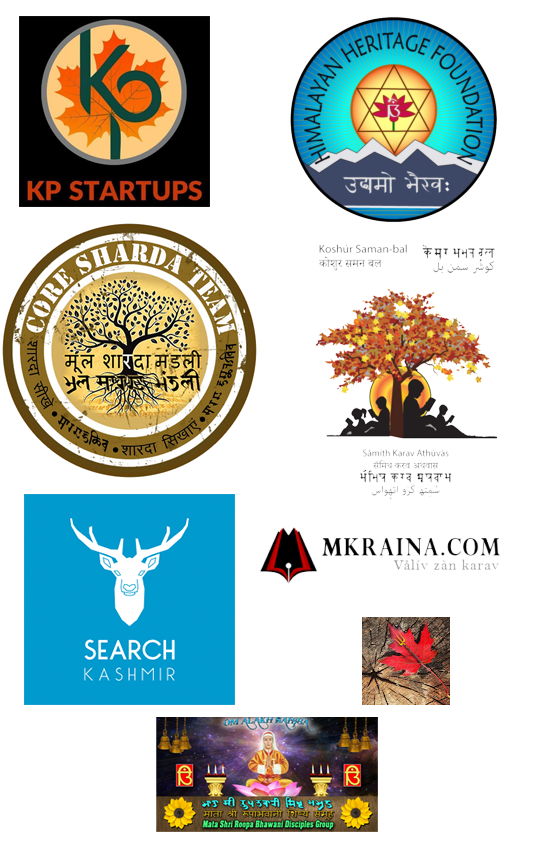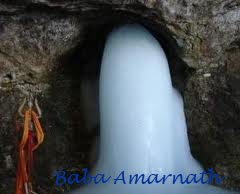 Shivratri / Heyrath / Herath:
Shivratri / Heyrath / Herath: Shivratri or Hayrath is regarded as the most important festivals of Kashmiri Pandits. This day is celebrated one day ahead of celebrations by the other Hindus. Pandits celebrate this day on thirteenth of the dark half of the month of Phalguna (February – March) however rest of the Hindus celebrate this day on fourteenth. The word “Heyrath” has been derived from Sanskrit word “Haratri” which means Night of Hara (other name of Lord Shiva. Heyrath is actually not about Shiv-Parvati marriage celebration, rather it has altogether a different legend associated with it. It is said – as mentioned in Bhairavotsava – that on this day the Bhairava and Bhairavi, His Shakti or cosmic energy, are propitiated through Tantric worship. Heyrath Pooza comprises of observance of the fasts during the day and performance of Yagna (fire sacrifice) during the night. Fish, Meat, and even Vegetarian dishes are cooked as the part of the sacrificial food and offered to the deities. After the offerings are made and Pooza is completed, the same food is eaten by the family members.
As per the manuscripts, it is said that a Linga appeared in the dusk of early night as the blazing column of fire. This was witnessed by Mahadevi’s mind born sons – Vatuk Bhairava and Rama Bhairava; who tried to find its start and end and failed miserably. Then, they started singing its praises to Mahadevi who herself merged in that fire Linga. Mahadevi then blessed both Vatuk and Rama Bhairava and said that they would be worshipped by the humans and would receive sacrificial offerings on that day every year. Since Vatuk and Rama Bhairava have emerged from pitcher full of water therefore on Heyrath a pitcher full of water in which walnuts are kept for soaking and worshipped along with Shiva, Parvati, Kumara, Ganesha, their ganas or attendant deities, yoginis and kshetrapalas (guardians of the quarters).
Khetchimavas / Khetsimavas / Yakshamavas: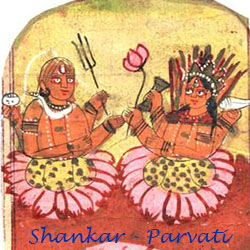
Khetchimavas is dates back to the hoary antiquity, which is celebrated on last day of the dark fornight of Pausha (December – January). On this day, Khichri, is offered to Kubera as sacrificial food. In night, a pestle or any stone is , is washed and anointed with sandalwood paste and vermilion and then worshipped as Kubera. After the Puja is over the portion of Naveidya is kept on the outer wall of his house by the worshipper in the belief that Yaksha will come to eat it and rest of the food eaten by the family members as Prasad.
Navreh:
This day is celebrated as the New Year’s Day. It is the first day of the bright half of the month of Chaitra (March–April. The word Navreh has been derived from sanskrit word “Nav varsha” which mean New Year. On the eve of Navreh or Navroz, a platter of unhusked rice with a bread, a cup of yogurt, a little salt, a little sugar candy, a few walnuts or almonds, a silver coin, a pen, a mirror, some flowers (rose, marigold, crocus, or jasmine) and the new panchanga or almanac is kept and seen as the first thing on waking up in the morning. The same ritual is observed on Sonth or the Kashmiri spring festival. It is believed that some 5079 years ago the Saptrishi era of Kashmiri Hindu calendar has started on this very day. As per the legend, on this date the saptrishis gathered on Hari Parbat when the first ray of the sun fell on the Chakreshwara and paid tributes to her. Since then the astrologers have marked this date as the basis of their calculations.
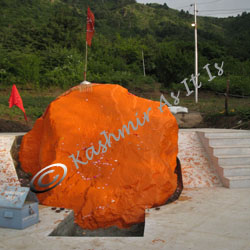 Zyeth Atham / Zishtha Atham:
Zyeth Atham / Zishtha Atham:
Zyeth Atham is celebrated on the eighth day of the bright half of Jiyashtha month (May-June) as pradhurbhava of Regnya Bhaghwati also known as Kheer Bhawani. Devotees offer their prayers by keeping fast all day, waving lamps, burning incense and offering Kheer, milk, loaf sugar and flowers to the Goddess. Ritually there is no specific Puja associated with this festival. Another day called Asharha Atam is celebrated on the similar grounds.
Teil Atham:
This festival is celebrated on the 8th day of the bright fortnight of Phalguna month. This is marked as the culmination of the Shivratri festival and hence adieu is bid to the winters. On this day Puja is offered to the chosen deity and number of lamps are lit in the home. In old days a tradition of tieng Kangri (filled with fire) with long rope and then moving it round and round in circles till it bumped down was practised. This was also called Jaa Teen Teen – meaning its burning flame.
Teiky Tschoram:
This festival is celebrated to pay tribute to Goddess Tripursundari (one who is beautiful in all the three worlds). Her cult is more prominent in Tikoo / Tiku clan of Pandtits. Tripursundari is believed to have the combined powers of all the three Goddesses – Maha Lakshmi, Maha-Saraswati and Maha-Kali. This day also marks the tantric tradition of Kashmiri Pandits as the Goddess is ritually accessed through Tantra and Mantra.
Pann: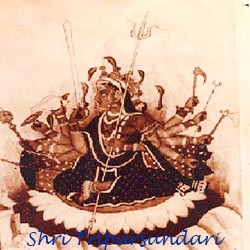
Pann literally meaning Thread, is associated with the spinning of newly produced cotton and worshipping the twin agricultural goddesses Vibha and Garbha. The Goddesses are offered with Roth or sweet bread cakes. This festival is celebrated on Ganesh Chathurthi (Vinayak Tschoram). Beeb Garabh Maj is represented by a lota or a water pot which is placed in the centre of the place where the Puja is to be performed, a cotton thread being tied to its neck and handful of dramun or runner grass kept inside it, pointing again to its agricultural origin. A story is told at the Pan Puja which is quite similar to the Satyanaryana Katha, showing some sort of confusion between two different Pujas. Preparation of the roths and their distribution for ushering in prosperity and auspiciousness has, however, become an important part of Kashmiri Pandit religious life.
Shravan Punim / Raksha Bandhan:
On this day the Kashmiri Pandits collect the holy clay from the Shankaracharya hill, mix mercury with it and make the required number of ‘Partheshwaras’ for a private pooja. They keep fast on this day and immerse the Partheshwara in the river waters in the evening. The Amarnath yatra also commences on this day to have the glimpse of Ice Lingum which waxes and wanes with the growth and decline of moon.
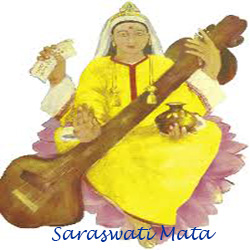 Haar / Ashad:
Haar / Ashad:
There are four important days in Ashad. Seventh day of bright fortnight called Haar satam, is celebrated by making a Haar Mandul in the courtyar called Vuz. Haar Mandul is round design filled with colors made to greet the goddess who is expected to grace the house with the arrival. On the similar notes, Vyuga, a design is also made – however Vyuga is made to greet the newly wed bride and groom to the house.
Kaw Punim:
This is celebrated on the full moon day of the lunar month Magha. As per the rituals, two sticks are tied in the form of cross and woven to make a flat spoon. Then after Puja, yellow rice or Tehar is offered to the crow. This festival is celebrated as the mark of love for the birds.
Gada Batta:
Gadda Batta means literally means fish and rice. On any Tuesday or Saturday of the dark fortnight in the lunar month of Pausha, fish is specially prepared and offered to Ghar Devta. The offering is marked by cleaning a place in room on the top floor and placing a plateful of rice and fish (some serve raw fish) for the Ghar Devta. After placing the rice and fish to the dity a feast with the near and dear ones is held.
Shishur: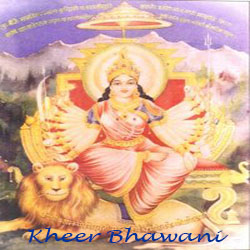
Shishur means winter and this occasion is for the newly born baby or newly web bride. On this day a little lime powder is placed in a piece of ‘Zarbaft’ cloth and stitched into a small triangular shape. This is then fixed on the cap of the new born or on the side of the sari which covers the head of the bride. The rationale behind this custom is to ward off any evil eye and any ill omen.
Gaur Trai / Gauri Trai / Gauri Tritya:
This day is celebrated on the third day of the bright fortnight of the Magha month. This day is celebrated for Godess Gauri or Saraswati – the Goddess of learning and knowledge. As per the tradition, if there is a new born child or there is an addition of a new bride in the family, then on this day the family priest is called and which offers Puja to the Saraswati. This is the day when the ne born child is taught his first alphabet. The very next day is also celebrated as Tripur Tschoram / Chaturthi and prayers are offered to Goddess of divine energy Tripursundari.
Ancient Festivals:
Mithra Punim celebrated on the fourteenth (full moon) night of the bright fortnight (shukla paksha) of the Hindu autumn month of Ashvin or Ashwayuja. The next morning was called Mitra Prabhat (Bamdad-e-Mithra), or the Morning of Mitra. Lotuses, rose petals and marigolds, washed in the water of the rivers Vitasta (now called Vyeth or Jhelum), Sarsati (Sarasvati), Madmati (Madhumati), and Kishenganga (Kruhun Ganga or Krishna Ganga), or in the water of the Ganges, along with walnuts, fruits and milk or milk-based sweets, were kept on a decorated platter in the honor of Mithra.
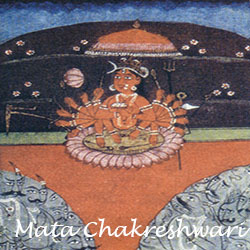 Monjhar Taher marks the Lunar Month of Marga Shirsha. Taher – yellow rice is cooked on all auspicious days including Tuesdays and Saturdays of this month and offered to a chosen deity. The Taher is also distributed among the friends, neighbors and relatives. However on the first day of the month the Rice is cooked and offered to the Ghar Divta (God of the Home. It is said that celebrating this often fulfills the wishes. Coinciding with this is a very significant observance on this day called the Matrika Pujan.
Monjhar Taher marks the Lunar Month of Marga Shirsha. Taher – yellow rice is cooked on all auspicious days including Tuesdays and Saturdays of this month and offered to a chosen deity. The Taher is also distributed among the friends, neighbors and relatives. However on the first day of the month the Rice is cooked and offered to the Ghar Divta (God of the Home. It is said that celebrating this often fulfills the wishes. Coinciding with this is a very significant observance on this day called the Matrika Pujan.
Vyatha Truvah is the day celebrate to offer Puja on the holy ghats of the river Vitasta. The river is worshipped by offering water, milk oblations vermillion, raw rice and flowers. On this day people also go to Verinaag as a pilgrimage since it is considered to the source of Vitasta.
Dodh is the day celebrated as the day when the bride informs her in-laws that she is in the family way. As per the tradition, the girl informs her mother of the news, and then she carries two pots of yughurt send from her parents and places them infront of her in-laws. This is considered as an informtion for the in-laws that they need now to take care of the girl’s health, comfort and diet.
Other days like Amavasya, Purnima, Ekadashi, Ashtami & Sankranti are the monthly fasts and, besides, there are occasional ones like Chandan Shashti, Bhimsen Ekadashi, Kali Ashtami, Shiva Chaturdashi, Kumara Shashti and the like. The anniversary day of the parents and also of the sages like Alakheshwari and Rishi Peer are also observed as fast days.
Read more about customs and rituals in our “Bakher-KP Speaks” section.
